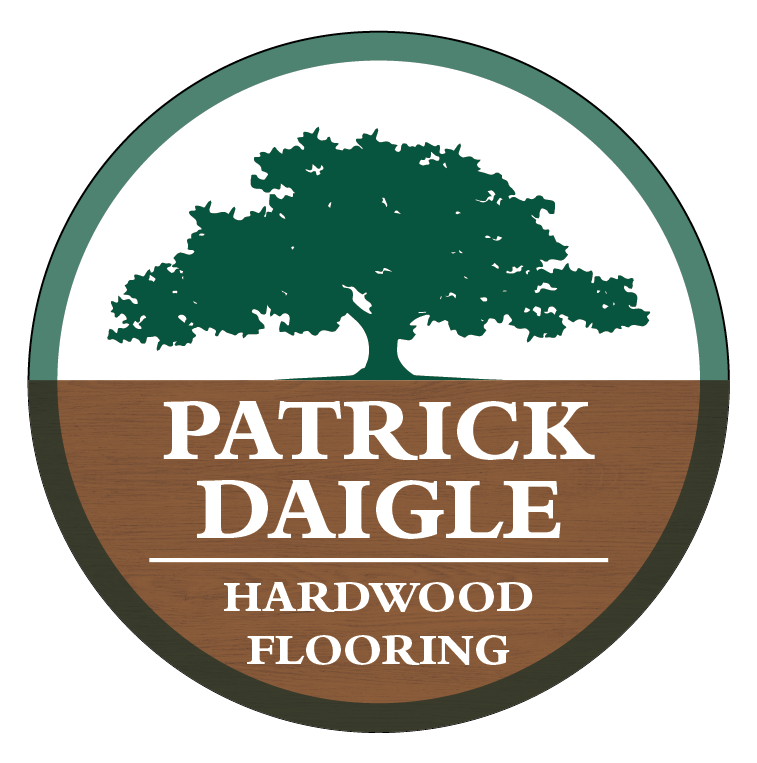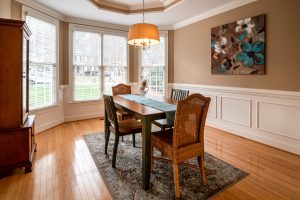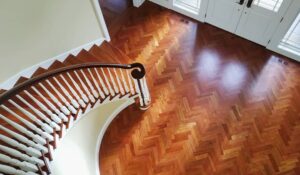Hardwood Floors and Pets
Hardwood Floors and Pets
I love hardwood floors but we have a very active young Golden Retriever and this dog can grow to be 70 pounds. What are some of the concerns which I should have for choosing the right hardwood floors for pets?
This is one of the most common questions we hear from families with pets, especially large dogs. The truth with pets urine (while it is acidic) is it is similar to spilling a glass of orange juice. This alone will not cause damage to your hardwood flooring if cleaned up in a timely manner. Hardwood flooring is built to be lived on and slow wear and tear is not only inevitable, it should be expected.
Scratches and dents will accumulate on the surface of your wood floors over time. These slowly become a character of your home and reminder of the experiences shared inside. With that being said, there are ways to reduce the visibility and preserving your perfect floors before and after the installation. It is the home owner’s responsibility to research on what type of flooring is best suited for their family. When selecting hardwood flooring, it is important to consider several factors which will affect the wear of your hardwood. These include the Finish, Hardness, Color, and Texture: Additionally, homeowners should seek out hardwood floor installation tips from professionals or reputable sources to ensure the longevity of their investment. Choosing a finish that offers durability can significantly enhance the floor’s resistance to scratches, while selecting a harder species of wood will help it withstand daily wear and tear. By paying close attention to these details, you can maintain the beauty and integrity of your hardwood floors for years to come.
•Finish:
The finish serves as a protective layer over or within the hardwood. When choosing a finish, consider a matte finish which will reflect less light making small scratches nearly undetectable.
•Hardness:
Hardness, also known as Janka Rating, is the most over-rated property in hardwood floors. High Janka Rating wood flooring will dramatically reduce dents created by 70+ pound dog nails, but it is far less likely to have any effect on preventing scratches on the surface.
•Texture:
Wood flooring is available in hand scraped and wire-brushed texture creating a distressed natural look. When choosing a softer wood species, texture might make the relatively lower Janka Rating irrelevant. Let’s face it, if you get a dent on a rough looking floor it will blend right in.
•Color:
Natural colored flooring will hide scratches more than a stained hardwood. When deep scratches occur, it may get through the finish into the bare wood. If your stain is a dramatically different color than the natural wood color, it will stick out like a sore thumb.
After 15-20 years of residential use, your wood flooring might be beginning to show its age. The good news is that most quality hardwood floors offers a sand-able wear layer, you will be able to restore your wood floors to brand new. Just call your local hardwood flooring store and they will be able to sand and finish your flooring to make it look brand new.




